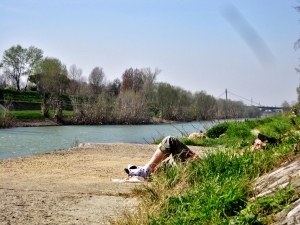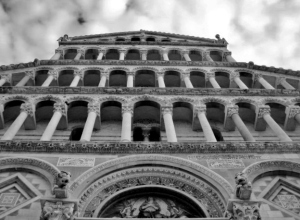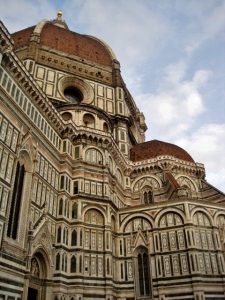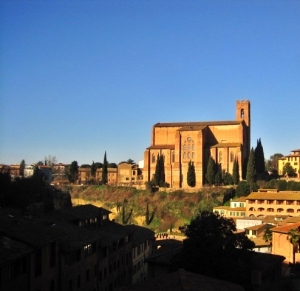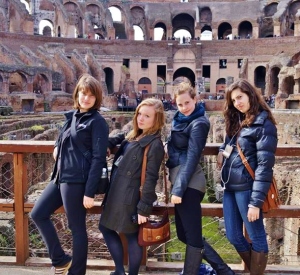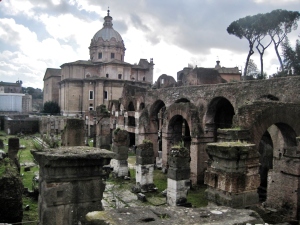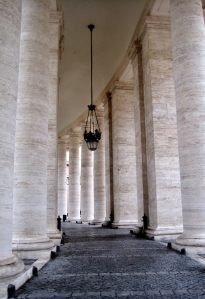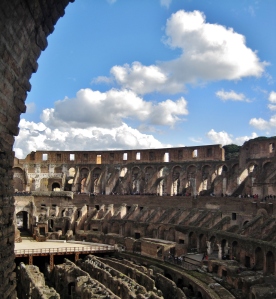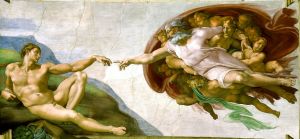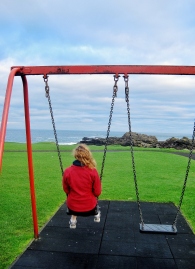The one person I knew in the country stood on the other side of sliding glass doors, shock apparent on her face as I banged on the panes before the metro zoomed into the unknown, taking me with it. I turned, looking at the annoyed looking people around me and muttered mostly to myself: “Welcome to Copenhagen”.
The abrupt immersion into the complete and utter unknown is something rarely experienced by individuals who are not either just being born or being abducted by aliens. I can say this experience was close. Fortunately my first visit to Denmark didn’t continue to be as dramatic and I enjoyed the nine days of my “spring break” in the presence of a good friend and the pleasant Danes, sleeping in and going on day adventures.
It was when I was up on the very top of the Church of Our Savior looking out at the beautiful city after a frightful climb that I began to contemplate happiness. As apparently the world’s happiest nation, I wondered if that was actually true and what factors contribute to this notion. I visited the colorful neighborhood of Christiania where it was apparent that the social factors added to the inhabitant’s personal delight. Labeled as Copenhagen’s “Green Light District”, the streets were lined with colorfully reconstructed army quarters, abstract sculptures made from recycled materials, and uplifting quotes about freedom and expressionism. With the personal liberties, albeit ones the law doesn’t necessarily agree with, and likeminded people banning together, this community welcomes outsiders in to witness their different kind of lifestyle.
It is obvious that societal influences affect overall happiness, which was curious to think about after lately experiencing several different types of cultures. While Florence seemed to be a city full of always emotionally distant people who focused on personal benefit, Copenhagen proved to be a city of high social trust as security itself adds largely to a more content mindset. The official report as to why this windy country remains so blissful is the result of six existing factors: (1) a large GDP per capita, (2) healthy life expectancy at birth, (3) a lack of corruption in leadership, (4) a sense of social support, (5) freedom to make life choices, and (6) a culture of generosity.* The general attitude can be summed up by a question posed by a true Copenhagen fanatic:
“But shouldn’t all of us on earth give the best we have to others and offer whatever is in our power?” -Hans Christian Andersen
I was glad to witness such a positive environment but began to think of happiness on a more individual level. One of my drawing professors once said that for him to be happy he has to live without feeling guilty; he has to have personal responsibility in life. For me, I need change, both mentally and physically, and I need to conquer this guilt.
When I was a child, I was afraid of everything. I used to think that when I grew up I couldn’t live in a normal house because of earthquakes and fires but I couldn’t live in a boat because it would sink. So I decided I needed to live in a blimp high up, but then I remembered lightning and that I was terrified of falling. I used to be scared of people, and of their intense emotions. I would shake when other people got mad or frustrated, and I would hide. I thought everyone else had so much authority, which led me most of all to be petrified of getting in trouble. I was the ideal child, obeying rules and being quietly polite, but no one realized it was because I was fearful.
I don’t exactly know what I thought would happen if I was caught doing something wrong. Maybe I was worried that person would tower over me and slowly break me down, making me believe that I was in fact what was wrong. For years I lived harboring guilt for things that didn’t actually happen; guilt for being scared. So I would run to the woods and make a fort out of sticks and grass and think to myself, “maybe I can just live here.”
I can identify six following points for my own personal happiness, some already stated and some more common sense, starting with the borrowed principles (1): banish unnecessary guilt, (2) build a personal community, (3) embrace change or, in the least, diversify life, (4) make journeys, either physically or mentally, (5) perpetuate creative learning, and (6) seek self-improvement. These may seem inherently obvious but for a long time, I did not follow them.
I am not a scared person now…I wouldn’t be where I am if I was. Of course I have rational fears but I do not let myself be controlled by what I haven’t experienced or what I don’t understand. Now, I am not afraid of the unknown.
*Information courtesy of The Huffington Post.






